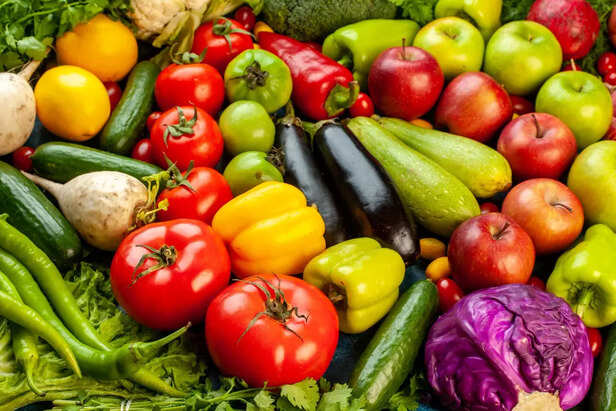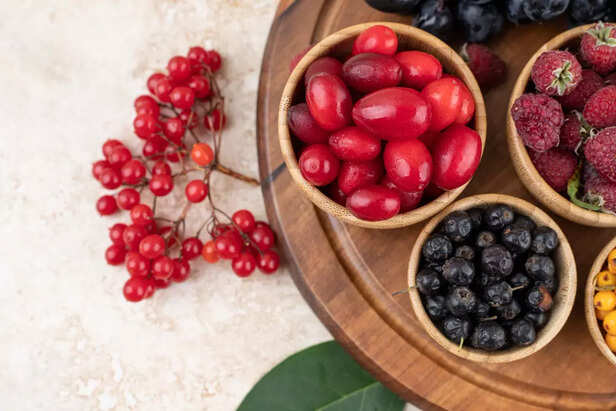This One Trick Keeps Fruits and Veggies Fresh 3x Longer (No Special Gadgets Needed!)
Nishi rawat | May 20, 2025, 10:00 IST
Keeping fruits and vegetables fresh isn’t just about tossing them into the fridge and hoping for the best. Whether you're a weekly meal prepper, a farmer’s market regular, or just trying to cut down on food waste, understanding the basics of fruits and vegetables storage can make a world of difference. This article breaks down tried-and-tested methods to preserve fresh produce, shares pro tips on how to make fruits and veggies last longer, and explores fresh produce storage tips you’ll wish you knew sooner. The goal? Less spoilage, more savings, and better nutrition from every bite.
In today's fast-paced world, maintaining the freshness of fruits and vegetables is both an economic and nutritional imperative. With rising grocery costs and increasing awareness about food waste, understanding how to store produce effectively can lead to significant savings and healthier meals. The secret lies not in expensive gadgets but in mastering the art of moisture control. By managing moisture levels appropriately, you can extend the shelf life of your produce, ensuring that it remains crisp, flavorful, and nutrient-rich.
 Moisture plays a dual role in the preservation of fruits and vegetables. While certain produce requires a humid environment to prevent wilting, excess moisture can promote mold growth and spoilage. Conversely, too little moisture can lead to dehydration and loss of texture. Striking the right balance is crucial. For instance, leafy greens benefit from a slightly moist environment, whereas berries thrive in dry conditions.
Moisture plays a dual role in the preservation of fruits and vegetables. While certain produce requires a humid environment to prevent wilting, excess moisture can promote mold growth and spoilage. Conversely, too little moisture can lead to dehydration and loss of texture. Striking the right balance is crucial. For instance, leafy greens benefit from a slightly moist environment, whereas berries thrive in dry conditions.


Maintaining the freshness of fruits and vegetables doesn't require expensive equipment or complex techniques. By understanding the role of moisture and implementing simple storage practices, you can significantly extend the shelf life of your produce. These methods not only save money but also contribute to reducing food waste and promoting healthier eating habits. Embrace these straightforward strategies to enjoy fresher, more flavorful produce every day.
Explore the latest trends and tips in Health & Fitness, Travel, Life Hacks, Fashion & Beauty, and Relationships at Times Life!
Frequently Asked Questions (FAQ's)
Understanding the Role of Moisture in Produce Freshness

Moisture on vegetables
Practical Steps to Control Moisture and Extend Freshness

Steps to keep veggies fresh
- Use Paper Towels to Absorb Excess Moisture: Lining storage containers with paper towels can effectively absorb excess moisture, creating an optimal environment for many types of produce. For example, placing a paper towel at the bottom of a container of spinach or strawberries can prevent sogginess and mold growth. This simple method can extend the freshness of your produce by several days.
- Store Leafy Greens in Sealed Containers: After washing and thoroughly drying leafy greens, store them in airtight containers lined with dry paper towels. This setup maintains the necessary humidity while preventing excess moisture accumulation, keeping the greens crisp and fresh. Regularly check and replace the paper towels if they become damp.
- Avoid Washing Produce Until Ready to Use: Washing fruits and vegetables before storage can introduce additional moisture, accelerating spoilage. It's advisable to wash produce just before consumption. If pre-washing is necessary, ensure thorough drying before storage to minimize moisture-related issues.
- Utilize the Crisper Drawer Effectively: The crisper drawer in your refrigerator is designed to maintain optimal humidity levels for produce. Adjusting the humidity settings can help cater to different types of produce. For instance, setting a higher humidity level is beneficial for leafy greens, while a lower setting suits fruits like apples and grapes. Proper use of the crisper drawer can significantly extend the shelf life of your produce.
- Separate Ethylene-Producing Fruits: Certain fruits, such as apples, bananas, and avocados, emit ethylene gas, which can accelerate the ripening and spoilage of nearby produce. Storing these fruits separately from ethylene-sensitive vegetables like lettuce and cucumbers can prevent premature spoilage. Utilizing separate storage areas or containers can effectively manage ethylene exposure.
Additional Tips for Specific Produce

Other fruits
- Berries: Store unwashed in a breathable container lined with paper towels.Wash just before eating to prevent mold growth.
- Herbs: Treat like fresh flowers by placing stems in a glass of water and covering loosely with a plastic bag. Store in the refrigerator and change the water every few days.
- Root Vegetables: Keep in a cool, dark place with good ventilation. Avoid storing onions and potatoes together, as they can cause each other to spoil faster.
- Tomatoes: Store at room temperature away from direct sunlight. Refrigeration can alter their texture and flavor.
Conclusion
Explore the latest trends and tips in Health & Fitness, Travel, Life Hacks, Fashion & Beauty, and Relationships at Times Life!
Frequently Asked Questions (FAQ's)
- How do I keep my fruits and vegetables fresh longer?Store them properly based on their type—some need refrigeration, others stay fresh at room temperature with airflow.
- How to store fruits and vegetables for longevity?Use breathable bags, avoid moisture buildup, and keep ethylene-producing fruits away from sensitive veggies.
- How do you make fresh fruit last longer?Wash only before use, refrigerate when needed, and store in dry, well-ventilated containers.
